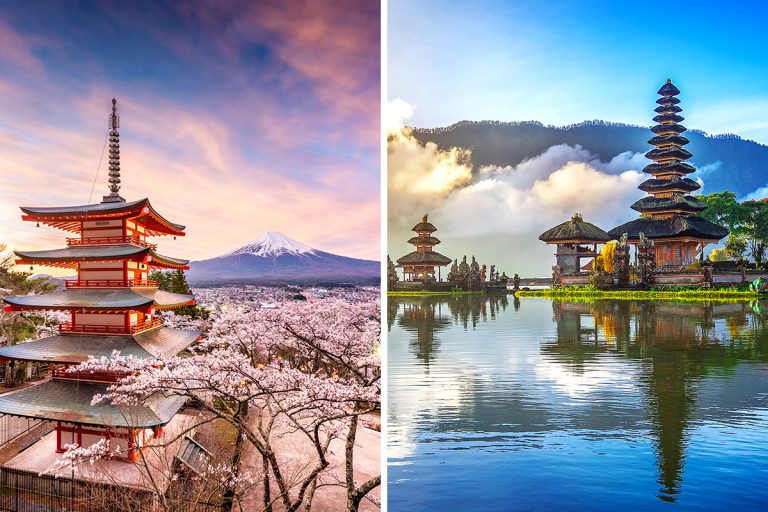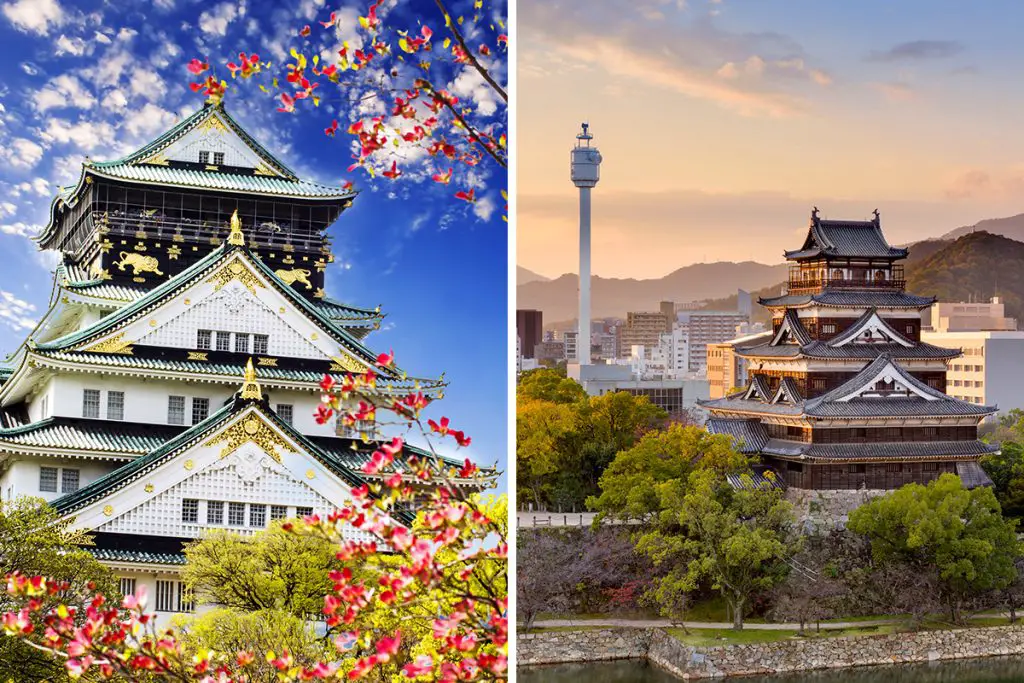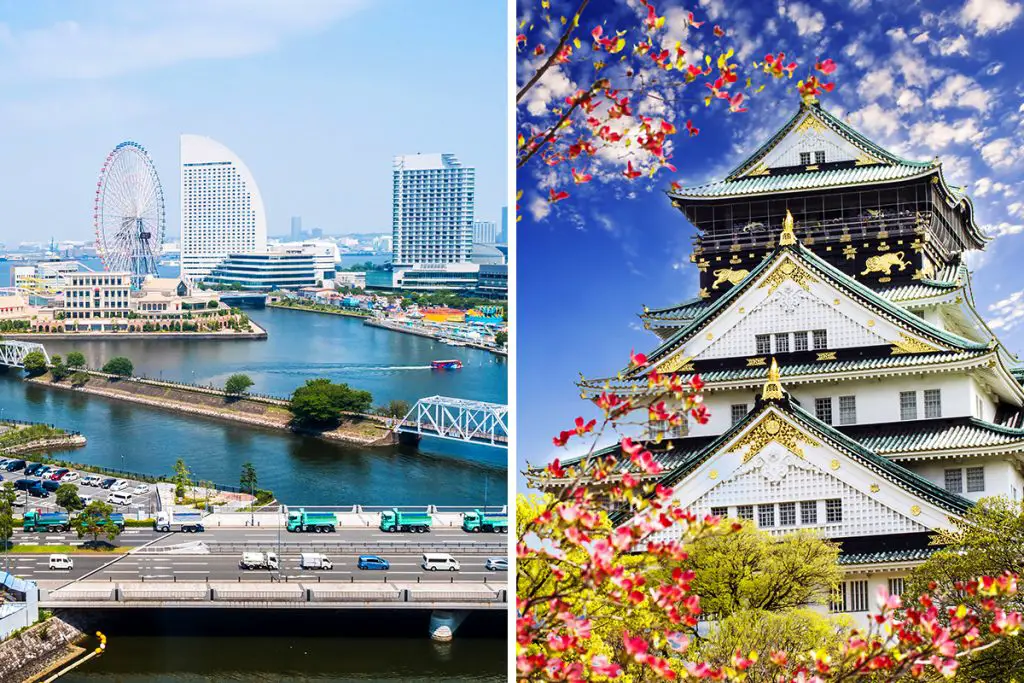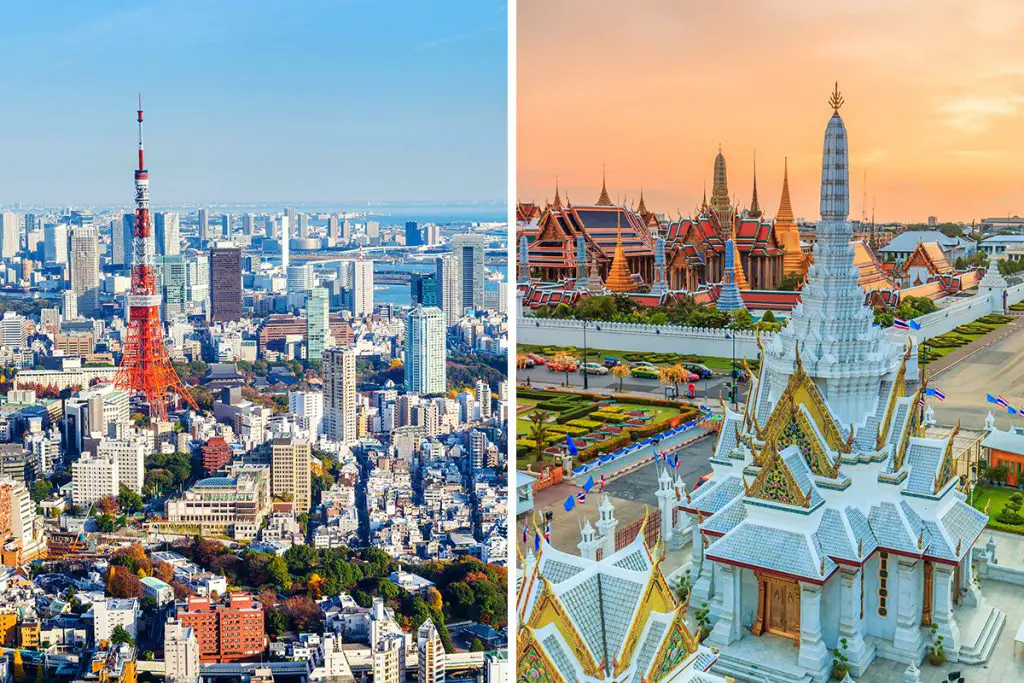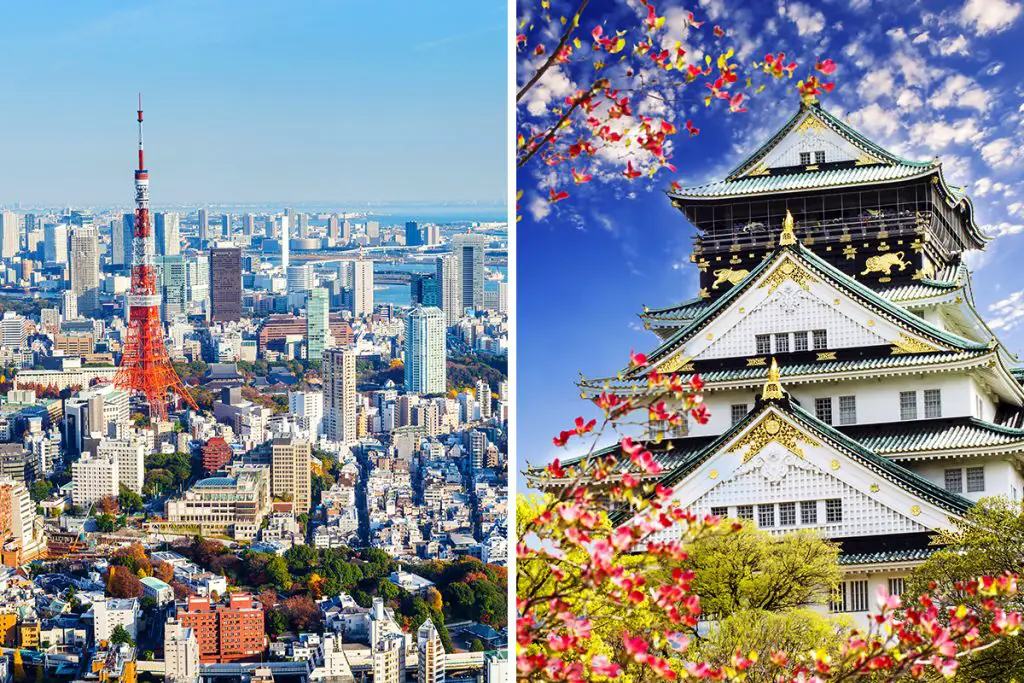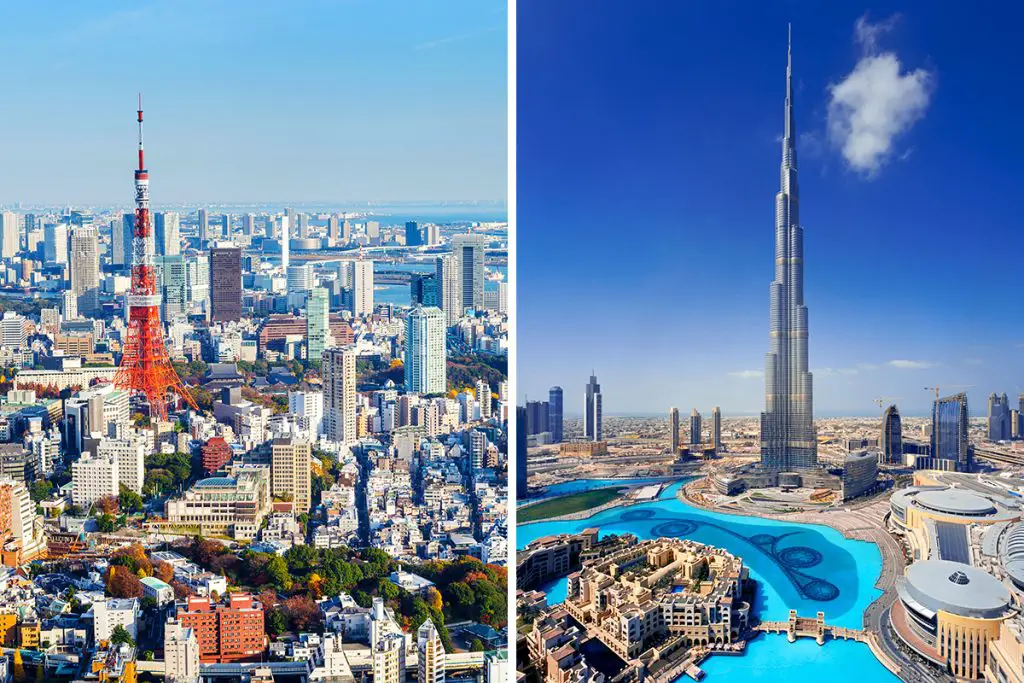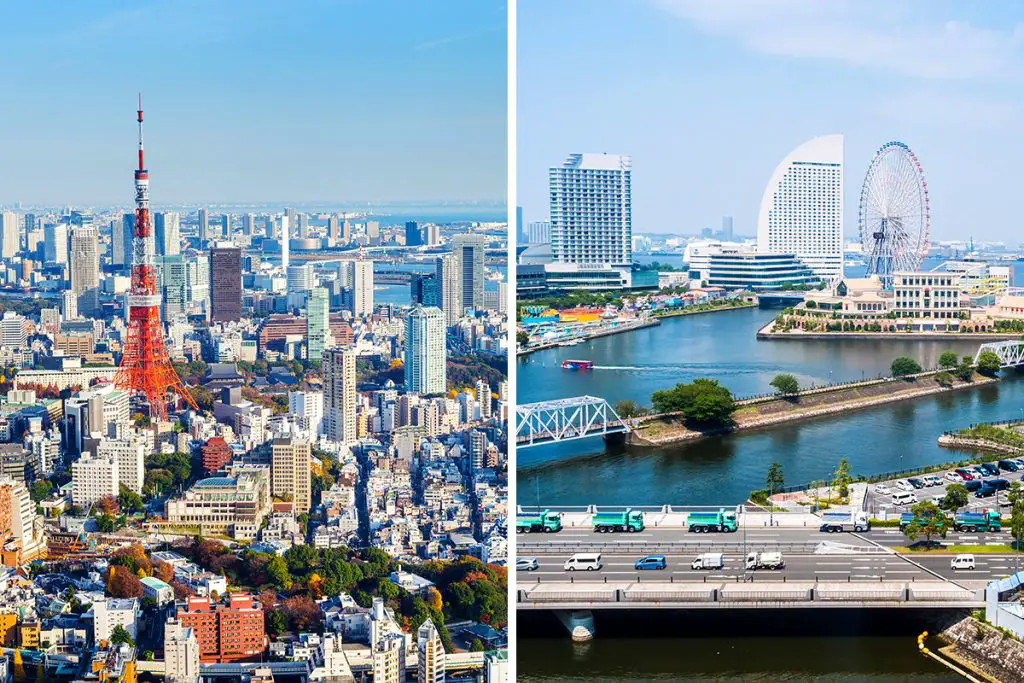Sure, both countries boast unique histories and a rich array of cultural offerings. So, you’re not just picking between destinations; you’re choosing between entire worlds. One day you could be watching cherry blossoms in Japan and the next, you might be scuba diving in the crystal-clear waters of Indonesia. Intrigued? Keep reading to help guide your choice.
History & Culture
When you think about immersing yourself in a new place, history and culture often come to mind. So let’s dive into these topics to better understand what Japan and Indonesia bring to the table.
Japan, known as the “Land of the Rising Sun,” offers a culture deeply rooted in traditions that go back thousands of years. From tea ceremonies to the ancient art of calligraphy, there’s a timeless aura about the place. But Japan also embraces the future. Cities like Tokyo are hubs of technology and innovation, blending the old and the new in a seamless fashion.
In contrast, Indonesia is a nation of islands, each boasting its own unique culture and history. While some islands like Bali are famous for their art and spirituality, others like Sumatra have histories steeped in trade and natural resources. Indonesia is like a mosaic, where each piece tells a different story but contributes to the larger picture of a diverse and unified nation.
But what do these differences mean for you, the traveler? In Japan, your journey might focus on the contrast between historical sites like ancient shrines and futuristic attractions like robot restaurants. You’d experience a society that values both its past and its future, sometimes in the same breath.
On the other hand, a trip to Indonesia could be a whirlwind tour of different cultures and traditions. One day, you might find yourself exploring ancient temples in Java; the next day could involve a traditional dance ceremony on a remote island. Every moment would be an opportunity to learn about a new facet of Indonesia’s rich cultural tapestry.
In summary, both Japan and Indonesia offer incredible depth in terms of history and culture. Japan provides a fascinating juxtaposition of ancient traditions and modern life, while Indonesia offers a kaleidoscope of cultures spread across its thousands of islands. So when it comes to history and culture, the choice between Japan and Indonesia is not a question of better or worse, but of what kind of richness you wish to explore on your travels.
Attractions & Activities
When it comes to filling your travel itinerary, both Japan and Indonesia offer a myriad of attractions and activities that could keep you occupied for months on end. But what kind of experiences are you after? Let’s dig into the specifics to see what each destination offers.
Japan is a haven for history buffs and tech enthusiasts alike. In Kyoto, you can walk through the mesmerizing Arashiyama Bamboo Grove, or visit the historic Fushimi Inari Shrine with its famous thousand Torii gates. Meanwhile, Tokyo offers attractions like the Studio Ghibli Museum for anime fans and the Tsukiji Fish Market for those interested in the culinary arts.
And for those keen on outdoor activities, you can climb Mount Fuji, Japan’s highest peak standing at 3,776 meters (12,389 feet), for a sunrise you’ll never forget.
Indonesia also has a wealth of diverse attractions, though they skew more toward natural wonders and adventure activities. Take a trip to Komodo Island to see the world’s largest lizard, the Komodo dragon, in its natural habitat.
For breathtaking landscapes, head to Mount Bromo in East Java; it’s an active volcano that you can trek up to the crater rim. The elevation is approximately 2,329 meters (7,641 feet) but the view is worth every step.
In addition, there’s the Borobudur Temple in Java, a 9th-century Buddhist temple that’s a marvel of design and symbolism.
So what does this mean for you? If you’re into the blend of the past and future, Japan offers an array of attractions that span the gamut from historical to high-tech. Whether it’s soaking up ancient culture or being mesmerized by modern marvels, you’ll find it here.
Indonesia, on the other hand, is your go-to if you’re an adventure seeker or a nature lover. Your days could be filled with wildlife spotting, trekking up volcanoes, or exploring ancient temples. The experiences are less about man-made wonders and more about the beauty that nature and history have carved out.
In summary, Japan offers a balanced mix of man-made and natural attractions, from ancient temples to futuristic museums. Indonesia excels in natural beauty and adventure activities, from volcanic treks to wildlife encounters. The question isn’t which country is better; it’s which type of experiences you’d prefer to fill your travel journal with.
Beaches
Ah, beaches! Both Japan and Indonesia have coastlines that are simply captivating, but the experiences they offer are distinctly different. Let’s set the scene for what you could expect on these sandy shores.
Japan’s beaches, while not as numerous as Indonesia’s, offer unique settings. Take Okinawa, for instance; it’s surrounded by coral reefs, offering excellent snorkeling opportunities. Okinawa’s Katsuren Peninsula has some stretches of sand that are about 800 meters (approximately half a mile) long. Here, the focus is on water activities like snorkeling and diving rather than just sunbathing.
Indonesia, home to some of the world’s most renowned beaches, tends to go big. Bali’s Kuta Beach stretches for about 8 kilometers (around 5 miles), offering endless horizons of sand and surf.
The beaches in Indonesia are usually synonymous with surfing, and several of them host international surfing competitions. The waves can get up to 2 meters high (about 6.5 feet), providing a thrill for surf enthusiasts.
In Japan, beach experiences are generally more tranquil and are often framed by unique natural phenomena like rock formations or coral reefs. You’re likely to find more locals than tourists, giving you a sense of an authentic, peaceful beach outing.
In contrast, Indonesia’s beaches are often buzzing hubs of activity, filled with both local and international tourists. You’re more likely to hear the sound of surfboards cutting through waves than the quiet lapping of water against the shore.
To sum it up, if you’re after a peaceful, intimate beach experience where you can connect more with nature and less with crowds, Japan’s coastline might suit you best. If you’re looking for beaches that offer high-energy activities and are a hive of action, Indonesia’s sandy stretches are the place to be.
Eating, Drinking & Nightlife
When you’re on the go, the flavors you savor and the evening activities you enjoy can really shape your travel memories. Both Japan and Indonesia offer unique experiences in terms of eating, drinking, and nightlife. Let’s dig into the details.
In Japan, the food is an art form. Whether it’s elegantly plated sushi or the casual warmth of a ramen bowl, the Japanese take their food seriously. Tokyo alone boasts the most Michelin-starred restaurants in the world, showcasing the high culinary standards of the country.
Street food like Takoyaki (octopus balls) and Okonomiyaki (savory pancakes) also hold their own, offering quick, affordable, and delicious options.
Now let’s talk about drinks. Japan is renowned for its sake, a rice wine that pairs excellently with a variety of foods. Also, don’t miss out on the experience of sipping on matcha tea, especially if you’re in Kyoto. Whisky bars are gaining popularity too, and the meticulous way bartenders craft your drink is an experience in itself.
For nightlife, cities like Tokyo and Osaka have no shortage of options, from karaoke bars where you can belt out your favorite songs to themed cafes where you can enjoy a unique ambiance. The Shibuya and Shinjuku districts in Tokyo are the hotspots for evening entertainment, featuring a variety of bars, lounges, and clubs.
In contrast, Indonesia offers a range of spicy and aromatic foods like Nasi Goreng (fried rice) and Satay (grilled meat skewers). In Bali, you’ll find a myriad of fresh fruit juices and exotic dishes cooked with a mix of sweet and spicy flavors.
As for nightlife in Indonesia, the scene is more concentrated around tourist hubs like Bali and Jakarta. Beach clubs are prevalent, and the evening usually starts with a sundown cocktail followed by a night of dancing to live DJs. It’s a more laid-back yet still vibrant, approach to evening entertainment.
To sum up, if you’re after meticulous culinary craft, classic drinks, and a variety of nightlife options, Japan is your pick. But if you prefer a more laid-back approach to food, drinks, and dancing, Indonesia has got you covered.
Shopping
Ah, the thrill of the hunt for the perfect souvenir or fashion find! Both Japan and Indonesia offer abundant shopping experiences, but they differ dramatically in what they offer and how they offer it.
Japan is a shopper’s paradise for both traditional and modern goods. In Tokyo’s Ginza district, you’ll find luxury brands and the latest tech gadgets. For something more traditional, the Asakusa area offers handcrafted items like folding fans and Kimonos.
Manga and anime fans should not miss Akihabara, a district dedicated to Japanese pop culture, complete with action figures, comics, and collectibles.
Indonesia has its own charm when it comes to shopping. Bali is famous for its artisan markets where you can buy handcrafted jewelry, wooden sculptures, and Batik fabric. In Jakarta, modern malls like Grand Indonesia and Plaza Indonesia offer a mix of international and local brands. You’ll also find several markets selling fresh produce, local sweets, and spices.
Japan’s shopping is often indoors, in meticulously maintained department stores and boutiques. Customer service is paramount, and you can expect unparalleled attention to detail, down to how your purchases are wrapped.
Indonesia offers a more open-air, marketplace feel. You’re more likely to haggle over prices here, especially in the local markets, adding an element of adventure to your shopping spree.
In conclusion, if you’re looking for high-end brands, cutting-edge tech, and impeccable service, Japan’s shops won’t disappoint. If you’re after unique, handmade items and enjoy the thrill of haggling, Indonesia’s markets are calling your name.
Accommodation
A good night’s sleep sets the tone for any vacation. When it comes to accommodations, Japan and Indonesia offer a myriad of options, each with its own flair and comforts. Let’s get into the specifics.
Japan features an array of unique lodgings, from traditional Ryokan inns to capsule hotels. A Ryokan offers tatami-matted rooms and communal hot spring baths known as “onsen.” It’s an immersive experience that typically includes a traditional Japanese breakfast.
Capsule hotels are for those who are looking for a budget-friendly yet futuristic experience. The capsules are cozy and designed for single occupancy.
Indonesia, particularly in tourist destinations like Bali, offers luxury resorts with private villas and infinity pools overlooking rice paddies or the sea. Budget travelers can opt for guesthouses called “homestays,” where you get to interact more closely with local families.
In Japan, booking in advance is often advised, especially during cherry blossom season or other popular festivals. Accessibility is usually excellent, with most hotels located near public transport stations.
In Indonesia, accommodation options are generally more dispersed. While you can book online, many smaller establishments don’t require advance reservations, giving you the freedom to wander and choose a place that suits you best once you arrive.
In summary, Japan offers a mix of traditional and modern accommodations, often in convenient locations. Indonesia provides a range of options from the luxury to the local, letting you decide on the spot. Where you stay can shape your entire trip, so choose what fits your style and needs best.
Family-Friendliness & Children’s Activities
Traveling with your family? Both Japan and Indonesia offer unique opportunities for family bonding and kid-friendly activities. Here’s what to expect.
Japan is often considered one of the safest countries in the world, making it a solid choice for family travel. Attractions like Tokyo Disneyland and Universal Studios in Osaka are always a hit with the kids. For educational experiences, various museums and historical sites are engaging for children, such as the Railway Museum in Saitama.
Indonesia is a natural playground, perfect for families who love outdoor activities. Bali offers safe beginner surf lessons for children. Elephant Safari Park in Ubud allows families to interact with the majestic creatures, offering a memorable experience for everyone.
In Japan, amenities like changing rooms and rental strollers are commonly available at major attractions. Even the public transportation system is designed with families in mind, featuring priority seats for parents with children.
Indonesia’s family-friendly resorts often come with kids’ clubs and child-friendly pools, making it easier for parents to relax while the young ones are occupied.
In conclusion, Japan stands out for its safety, structured activities, and family-friendly amenities. Indonesia shines with its outdoor activities and relaxed resort settings that cater to families. Each destination has its own unique way of making your family trip unforgettable.
Getting There & Getting Around
Ah, the logistics of travel—often seen as a necessary evil, but it doesn’t have to be stressful. Japan and Indonesia both have their unique set of travel norms and networks.
Flying into Japan usually means landing at Tokyo’s Narita or Haneda Airports. Both are well-connected to the city center—Narita is 70 kilometers (43.5 miles) away, and Haneda is 30 kilometers (18.6 miles) away. Bullet trains, or Shinkansen, offer rapid connections between major cities, reaching speeds of up to 320 kilometers per hour (198.8 miles per hour).
To reach Indonesia, Bali’s Ngurah Rai International Airport is the usual entry point for most travelers. It’s located 13 kilometers (8.1 miles) south of Denpasar, the island’s capital. Domestic flights are often the quickest way to hop between islands in this sprawling archipelago.
In terms of getting around, Japan’s public transportation is world-class. You’ll find buses, subways, and trains that run with clock-like precision. Ticket machines have English options, and route maps are easy to understand.
In Indonesia, you’re more likely to rely on taxis or rent a scooter for short distances. Public buses are available but can be less predictable in terms of timing. Rideshare apps like Grab are widely used and offer a convenient option for getting around cities like Jakarta and Bali.
In summary, Japan offers efficient and extensive public transportation, while Indonesia gives you the freedom to explore at your own pace, albeit with less structure. Both have their pros and cons, so choose what aligns with your travel style and comfort.
Weather
Ah, the weather! It can make or break a vacation, can’t it? Japan and Indonesia offer very different climates, thanks to their unique geographical locations. Let’s dig into the meteorological details so you can plan your trip like a pro.
Japan experiences four distinct seasons. If cherry blossoms catch your eye, consider visiting in the spring, around late March to April. The temperatures hover between 50-65°F (10-18°C).
Summers can be hot and humid, especially in July and August, with temperatures reaching 85-95°F (29-35°C). Autumn, between September and November, offers mild temperatures and colorful foliage. Winters, especially from December to February, can be chilly, ranging from 32-45°F (0-7°C), and perfect for skiing or soaking in an onsen.
Indonesia, being a tropical paradise, is warm year-round. However, it has two main seasons: dry and wet. The dry season from April to October sees temperatures around 79-89°F (26-32°C). The wet season, which lasts from November to March, can be humid with occasional showers, but the temperatures stay pretty much the same.
Japan’s weather is more variable, requiring you to pack a versatile wardrobe. Indonesia, on the other hand, mostly calls for lightweight, breathable fabrics irrespective of when you visit.
In summary, Japan offers a rich seasonal experience, perfect for those who love variety. Indonesia stays consistently warm, ideal for beachgoers and outdoor enthusiasts.
Safety
Safety is often a top concern when choosing a travel destination. So how do Japan and Indonesia stack up in this regard? Let’s delve into the details.
Japan is frequently ranked as one of the safest countries in the world. Violent crime rates are extremely low, and petty crimes like pickpocketing are relatively rare. Even walking at night in most areas feels safe.
Indonesia generally offers a safe travel experience but exercise caution in certain regions. Petty crimes like bag-snatching can occur in touristy areas. Always keep an eye on your belongings and avoid poorly lit areas at night.
On the topic of natural disasters, Japan experiences earthquakes and has many active volcanoes. It’s smart to familiarize yourself with emergency procedures. Indonesia also faces natural risks like volcanic eruptions and tsunamis, particularly in areas close to the Ring of Fire.
To summarize, both countries are generally safe for travel but come with their own sets of risks—Japan has a very low crime rate, whereas caution needs to be exercised in certain regions in Indonesia. Natural risks exist in both destinations, so it’s wise to stay informed.
Cost
Money matters, especially when it comes to making the most of your vacation. So, how do Japan and Indonesia compare in terms of cost? Let’s examine the details.
Japan is generally considered a more expensive destination. A mid-range meal can cost around 2,000 yen ($18), while a similar meal in Indonesia would be around 100,000 rupiahs ($7).
Lodging in Japan, especially in cities like Tokyo, can be on the pricier side—expect to pay around $170 per night for a standard hotel room. In Indonesia, a similar hotel might cost you $115.
Transportation in Japan is highly efficient but comes with a cost. A single journey ticket for the Tokyo Metro starts at 170 yen ($1.5). In Indonesia, transportation is less organized but significantly cheaper—a local bus ride may cost around 3,500 rupiahs ($0.25).
In summary, Japan is a more expensive destination, demanding a higher budget for food, lodging, and transportation. Indonesia offers a budget-friendly experience without skimping on beauty or activities. Choose based on what your wallet allows, but rest assured, both destinations offer rich experiences worth every penny.
Which Is Better – Japan or Indonesia?
You’ve embarked on a whirlwind tour of Japan and Indonesia, two extraordinary destinations, each with its unique allure. Let’s take a moment to pull back the curtain and review what sets each place apart, helping you make that crucial decision: Japan or Indonesia?
In the realm of history and culture, Japan offers a tapestry of traditions, architecture, and seasonal festivals that provide a rich, multifaceted experience. Indonesia, on the other hand, serves up a mosaic of cultures and religions, evident in its customs and temples. Both are treasure troves, but Japan may resonate more with those keen on ancient rituals and historical depth.
When it comes to attractions and activities, Japan boasts everything from snow-capped mountains to ancient temples. Indonesia captivates with its wildlife, particularly in places like Bali and Sumatra. Your preference between modern and natural wonders will be the deciding factor here.
For beach enthusiasts, Indonesia wins hands down with its tropical havens, ideal for surfing and scuba diving. Japan has its own coastal charm, but it’s more subdued and perhaps better suited for those who enjoy a serene landscape without the frills.
As for eating, drinking, and nightlife, Japan offers an exquisite culinary journey, complete with world-renowned beverages like sake. Indonesia’s food scene is equally exciting but considerably cheaper. Nightlife in both countries varies from vibrant city scenes to more relaxed, seaside venues.
Shopping is a unique experience in both lands. Japan is the go-to for high-tech gadgets, anime merchandise, and traditional crafts. Indonesia excels in handmade arts and crafts, and it’s the place to go for unique, local finds at bargain prices.
In terms of accommodation, Japan’s places are generally more expensive but offer high standards of service and cleanliness. Indonesia provides a wider range of budget-friendly options, from hostels to luxurious beachside villas.
When you factor in family-friendliness, ease of transportation, and weather conditions, your choices may begin to lean one way or another. Japan is more accessible, with efficient public transport, while Indonesia offers more outdoor activities for kids.
Japan provides a variety of climates due to its four distinct seasons, whereas Indonesia remains warm year-round. As for safety, Japan frequently ranks as one of the safest countries, whereas in Indonesia, a little more vigilance is needed.
In a nutshell, if you’re looking for a destination that offers rich history, luxurious accommodations, and diverse climates, Japan should be at the top of your list. If you desire a more budget-friendly, tropical experience with an emphasis on nature and beaches, Indonesia will be your paradise.
So, have you made your choice? Each country has its unique charm, and ultimately the decision boils down to what you’re looking to get out of your journey. Either way, unforgettable experiences await.

